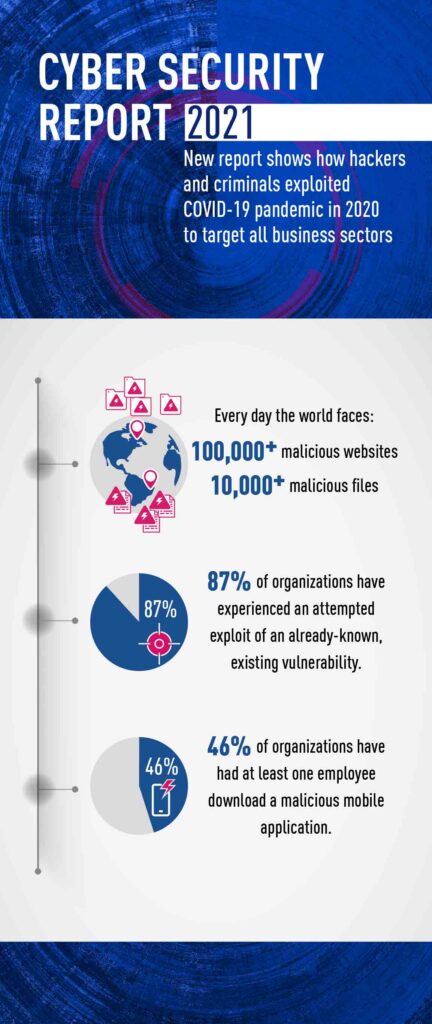
Check Point Research (CPR), the Threat Intelligence arm of Check Point® Software Technologies Ltd. has published its 2021 Security Report. The report reveals the key attack vectors and techniques observed by CPR researchers as criminal, political and nation-state threat actors exploited the disruption caused by the COVID-19 pandemic to target organizations across all sectors. It also gives cyber-security professionals and C-Level executives the information they need to protect their organizations against these advanced fifth-generation cyber-attacks and threats.
Highlights of the Check Point Research 2021 Security Report include:

“Businesses globally surprised themselves with the speed of their digital initiatives in 2020: it’s estimated that digital transformation was advanced by up to seven years. But at the same time, threat actors and cyber criminals also changed their tactics so that they could take advantage of these changes, and the pandemic’s disruption, with surges in attacks across all sectors,” said Dorit Dor, vice president of products, Check Point Software. “We need to act now to stop this cyber pandemic spreading out of control. Organizations need to vaccinate their hyper-connected networks to prevent these damaging cyber-attacks that cause so much disruption. .”
Check Point’s 2021 Security Report is based on data from Check Point’s ThreatCloud intelligence, the largest collaborative network for fighting cybercrime which delivers threat data and attack trends from a global network of threat sensors; from Check Point’s research investigations over the last 12 months; and on recent survey reports by Check Point of IT professionals and C-level executives. The report examines the latest emerging threats across industry sectors, and gives a comprehensive overview of the trends observed in the malware landscape, in emerging data breach vectors, and in nation-state cyber-attacks. It also includes expert analysis from Check Point’s thought leaders; to help organizations understand and prepare themselves for today´s and tomorrow’s complex threat landscape.